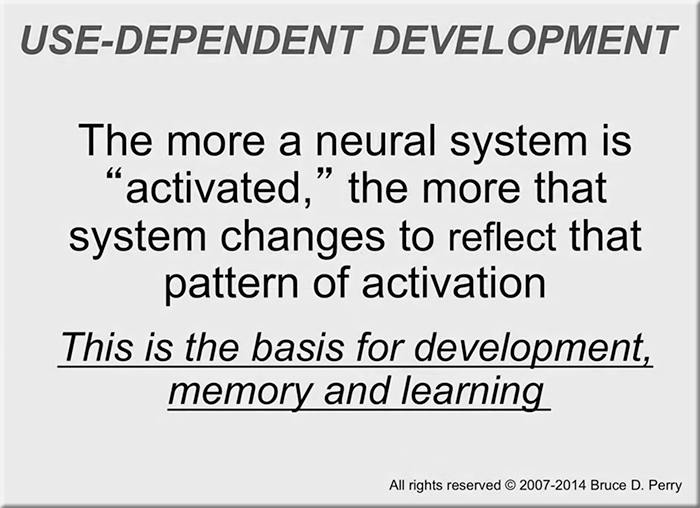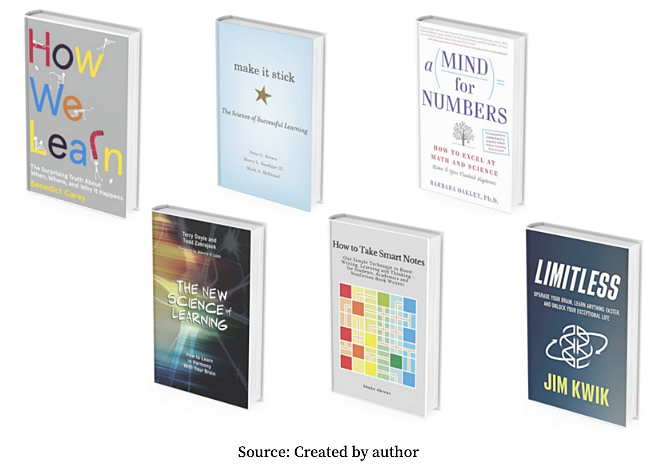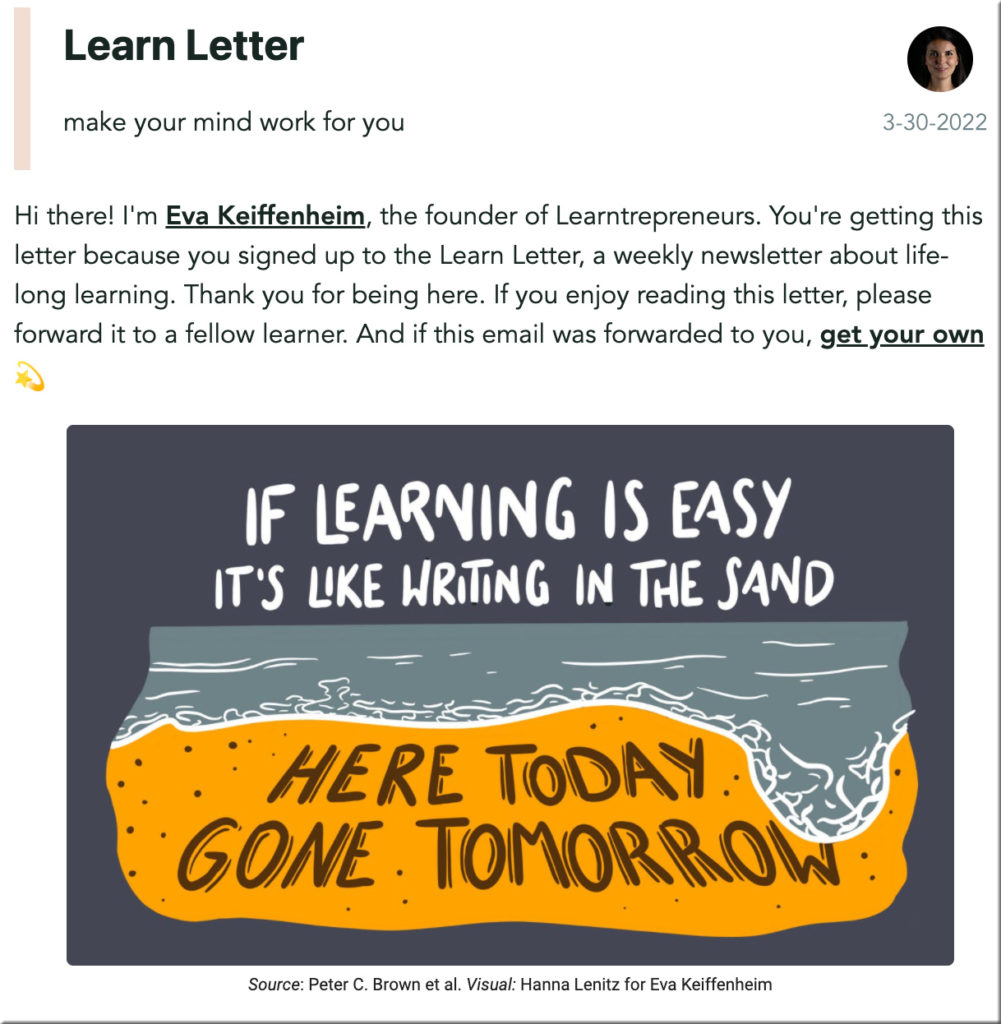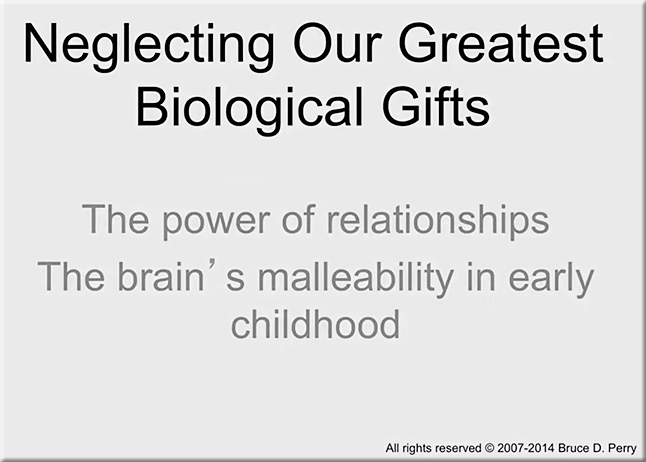Have you followed our NEW Twitter list of cognitive scientists yet? #retrievalpractice https://t.co/aXYIblZ37Y
— Retrieval Practice (@RetrieveLearn) June 7, 2022
A Podcast Listening Strategy for Learning — from learntrepreneurs.com by Eva Keiffenheim
Three steps to make the most of your podcast time
Excerpt (emphasis DSC):
Use apps that help you remember more
You won’t remember much from a podcast if you only listen to it. Your brain needs repetition and elaboration to make new knowledge stick.
Unlike books, you can’t highlight audio?—?or can you?
I listen to my podcasts while biking or walking. Hence, an extremely uncomfortable situation to open a notepad or Roam Research whenever I hear an interesting idea.
But two applications have transformed how I listen to podcasts: Snipd and Airr. Both are audio highlighting tools.
The Key Idea All Great Books on Learning Have in Common — from learntrepreneurs.com by Eva Keiffenheim
And how you can implement the powerful way to learn.
.
I Analyzed 13 TED Talks on Improving Your Memory — Here’s the Quintessence — from learntrepreneurs.com by Eva Keiffenheim
How you can make the most out of your brain.
Excerpt:
In her talk, brain researcher and professor Lara Boyds explains what science currently knows about neuroplasticity. In essence, your brain can change in three ways.
Change 1 — Increase chemical signalling
Your brain works by sending chemicals signals from cell to cell, so-called neurons. This transfer triggers actions and reactions. To support learning your brain can increase the concentration of these signals between your neurons. Chemical signalling is related to your short-term memory.
Change 2 — Alter the physical structure
During learning, the connections between neurons change. In the first change, your brain’s structure stays the same. Here, your brain’s physical structure changes — which takes more time. That’s why altering the physical structure influences your long-term memory.
For example, research shows that London taxi cab drivers who actually have to memorize a map of London to get their taxicab license have larger brain regions devoted to spatial or mapping memories.
Change 3 — Alter brain function
This one is crucial (and will also be mentioned in the following talks). When you use a brain region, it becomes more and more accessible. Whenever you access a specific memory, it becomes easier and easier to use again.
But Boyd’s talk doesn’t stop here. She further explores what limits or facilitates neuroplasticity. She researches how people can recover from brain damages such as a stroke and developed therapies that prime or prepare the brain to learn — including simulation, exercise and robotics.
Her research is also helpful for healthy brains — here are the two most important lessons:
The primary driver of change in your brain is your behaviour.
…
There is no one size fits all approach to learning.
From DSC:
This is so important. It’s the underlying cognitive science/psychology involved in the posting I recently created that was entitled, “What are the ramifications of having cognitive “highways in our minds?” It occurs to me that patience, grace, forgiveness, work, new habits, and more are required here.
Daniel Willingham: "Memory is the residue of thought."
DC: Which got me to thinking, what's my residue about? What is it composed of? This topic reminds me of Philippians 4:8. Hmmm…I think that I have got a long ways to go.
— Daniel Christian (he/him/his) (@dchristian5) March 31, 2022
Sticky learning: Digital brain dumps with Flipgrid and Socrative — from ditchthattextbook.com
Excerpt:
Retrieval practice is powerful. It can be an easy practice to incorporate in class. Plus, there are some great digital tools that are made for this kind of practice.
In this post, you’ll learn …
- What a “brain dump” is and how to do it
- How to do video brain dumps with Flipgrid
- How to do text brain dumps with Socrative
- Why you don’t need tech to do brain dumps
- Where you can find more info and research behind brain dumps
From DSC:
One of my sisters is a Professor of Psychology and she highly recommended that I check out the work of Dr. Bruce D. Perry. Below is an example video that was recorded on October 25, 2014 as part of the 25th Anniversary Chicago Humanities Festival, Journeys. I included some excerpted slides in this posting to give you a flavor of portions of this talk.
Description (emphasis DSC):
Each of us takes the same journey from birth to consciousness—but none of us recalls it. This early stage of life is crucial; Sigmund Freud famously obsessed over it, as do millions of parents every day. What goes on cognitively during that time, and what can parents—and other adults—do to further promote infant well-being? Join renowned psychiatrist Bruce D. Perry, recipient of the 2014 Dolores Kohl Education Prize, for this discussion of early-childhood brain development and its long-term importance.
Social & Emotional Development in Early Childhood [CC]

















